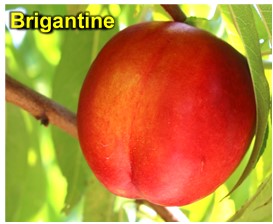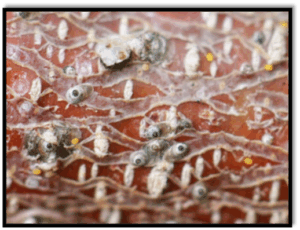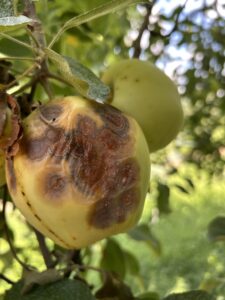 Summer Beaut – A medium to medium-large, ovate, 90-100% scarlet-red over yellow ground color, yellow-fleshed, semi-freestone, nectarine ripening from July 29-Aug 1. The flesh is firm with a good acidic flavor. The tree is moderately vigorous, moderately productive, and seems to fruit more heavily when planted near another variety. It has medium susceptibility to bacterial spot. Summer Beaut always has a few split pits. Table 1 summarizes the physical and chemical properties of nectarine varieties – Summer Beaut, Sunglo, and Flavortop.
Summer Beaut – A medium to medium-large, ovate, 90-100% scarlet-red over yellow ground color, yellow-fleshed, semi-freestone, nectarine ripening from July 29-Aug 1. The flesh is firm with a good acidic flavor. The tree is moderately vigorous, moderately productive, and seems to fruit more heavily when planted near another variety. It has medium susceptibility to bacterial spot. Summer Beaut always has a few split pits. Table 1 summarizes the physical and chemical properties of nectarine varieties – Summer Beaut, Sunglo, and Flavortop.
Sunglo – A medium-large to large, globose to slightly ovate, 80-90% orange-scarlet-red, over yellow-orange ground color, yellow-fleshed, freestone nectarine ripening from August 6-9, or approximately 12 days after Redhaven. The flesh is very firm with a very good to excellent acidic flavor. The tree is moderately vigorous and moderately productive, with high susceptibility to bacterial spot.
Flavortop – A medium to large, ovate to globose, 90-100% crimson-red over greenish-yellow ground color, yellow-fleshed, freestone nectarine ripening from August 4-7, or approximately 10 days after Redhaven. The flesh is firm with a very good acidic flavor. The tree is moderately vigorous and productive, with high susceptibility to bacterial spot.
Articles on peach and nectarine varieties in the previous seasons:
- Late-July Peach Varieties: https://plant-pest-advisory.rutgers.edu/late-july-peach-varieties-for-new-jersey-new-and-standard/
- Late-July Nectarine Varieties: https://plant-pest-advisory.rutgers.edu/late-july-nectarine-varieties-for-new-jersey-new-and-standard/
- Mid-July Nectarine Varieties: https://plant-pest-advisory.rutgers.edu/mid-july-nectarine-varieties-for-nj-silvergem-silverglo-easternglo-and-avalon/
- Mid-July Peach varieties: https://plant-pest-advisory.rutgers.edu/mid-july-peach-varieties-gala-pf-8-ball-summer-serenade-july-rose-and-pf-lucky-13/
- Early July Peach Varieties: https://plant-pest-advisory.rutgers.edu/early-july-peach-varieties-sentry-glenglo-ruby-prince-garnet-beauty-and-sugar-may/
- Late June Peach Varieties: https://plant-pest-advisory.rutgers.edu/late-june-peach-varieties-for-new-jersey-new-and-standard/








